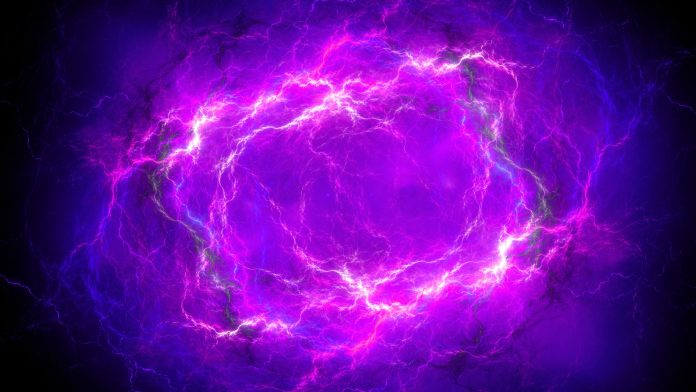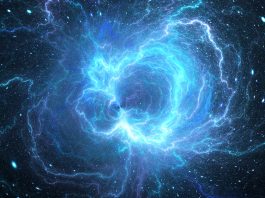A long-duration gamma-ray burst observed in 2021 has forced scientists to create a new formation model.
An international team of astrophysicists has reported the discovery of a unique cosmological gamma-ray burst (GRB) that defies current theories of how the violent cosmic explosions form. This exceptional burst has resulted in a new proposed model, or source, for certain types of gamma-ray bursts.
The study, ‘A long-duration gamma-ray burst with a peculiar origin,’ is published in the journal Nature.
What is a gamma-ray burst and how is one formed?
Gamma-ray bursts are luminous and violent explosions that signify the deaths of stars or collisions of stellar remnants. Typically, observed gamma-ray bursts can be placed into two categories, either short- or long-duration GRBs.
A long gamma-ray burst is formed from the death of massive stars and is usually associated with bright optical transients called supernovae. Short gamma-ray bursts originate from the collisions of two neutron stars or a neutron star and a black hole, and have a duration of fewer than two seconds. These gamma-ray bursts are associated with more faint optical transients known as kilonovae.
For many years, gamma-ray bursts have been able to fit comfortably into these categories. However, this is set to change with the discovery of a unique gamma-ray burst.
Detecting the unique gamma-ray burst
On 11 December 2021, a gamma-ray burst triggered several gamma-ray detectors in space, including NASA’s Fermi Gamma-ray Telescope and the Neil Gehrels Swift Observatory. This GRB, with a reported duration of around 70 seconds, would usually be regarded as a normal long gamma-ray burst. However, with the input of multiple teams from the US and Europe, a surprising signature was discovered.
“This GRB includes two parts: a 13-second long hard spike and a 55-second softer extended emission,” said UNLV alumnus and study corresponding author Bin-Bin Zhang, who’s currently with China’s Nanjing University. “The duration of the 13-second hard spike should have completely excluded this burst from the short GRB category.”
Instead of expectedly showing a much brighter supernova, the observation was consistent with a kilonova, which is usually associated with a short GRB.

“Such a peculiar GRB was the first of its kind ever detected,” said UNLV astrophysics professor Bing Zhang, co-corresponding-author of the paper. “This discovery not only challenged our understanding of GRB origins, it also requires us to consider a new model for how some GRBs form.”
Developing a new formation model
The researchers believe that this unique GRB, known as GRB 211211A, is likely to be formed through a collision between a neutron star and a white dwarf – a WD-NS merger.
White dwarfs are Earth-sized objects that form from the death of low-mass stars – those with a mass smaller than about eight of our Suns. Neutron stars form when more massive stars, that have a mass between eight and 20 Suns, die off. Black holes are formed when even larger stars die.
Massive, low-density stars form long-duration GRBs, and high-density stars, including neutron stars, make short-duration GRBs. According to Zhang, white dwarfs have intermediate densities, making them ideal origins for the type of gamma-ray burst discovered in 2021. This is because it displays a long duration without the involvement of a massive star.
“Despite the relatively large number of GRBs observed each year, the unique signature of GRB 211211A pushed the envelope of our current categorial systems and required a new way of thinking,” said Zhang. “After careful review, the only merger scenario that made sense was that of a white dwarf and neutron star.”
The researchers developed a detailed model to interpret the peculiar kilonova signature observed by GRB 211211A. Artificial Intelligence then found that if a WD-NS merger leaves behind a rapidly spinning neutron star, known as a magnetar, the energy injection from the magnetar, combined with the nuclear reaction energy from the material thrown during the burst, can account for the kilonova emission observed for GRB 211211A.









